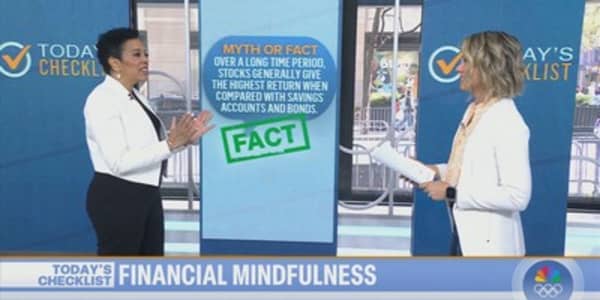
Many college students in this country know almost nothing about student debt — and their lack of knowledge can have a devastating effect on their financial future.
Seven in 10 seniors owe nearly $30,000 when they graduate from college. Yet a startling 42.5 percent of current students wrongly believe student-loan debt is not a factor in determining their credit score and overall creditworthiness, according to a recent survey by the student-loan marketplace LendEDU.
Not understanding how the system works can have a lasting negative impact on borrowers — students and parents.
Be sure to avoid these mistakes when it comes time to apply for a loan:
1. Failing to fill out the FAFSA
If you're applying for need-based aid for college, students and parents should complete the Free Application for Federal Student Aid, known as the FAFSA. The federal government gives over $150 billion each year in need-based aid, but you won't get a penny unless you fill out this form.
When it comes to getting money, be the early bird.
"Students who file earlier on average get more grants," said financial aid expert Mark Kantrowitz, publisher of Cappex.com, a scholarship website.
Don't wait around for admissions letters. Financial aid deadlines fall between January and March, so fill out your FAFSA right after Jan. 1. Also, there's a big change coming, and soon you'll be able to apply even earlier. Tax information from two years prior may be used to file an "early FAFSA" on Oct. 1, 2016, for the 2017-18 school year.
State-based and college aid can have early deadlines, too, so know when to file those forms as well.
2. Not looking for aid...everywhere
Be proactive. The more free money you find, the less you'll have to borrow. You can find scholarships from local, state and national organizations. Search online using websites including Scholarships.com, Fastweb.com and Cappex.com that match your personal background with specific eligibility criteria.
Do this every year because you may able to pick up new scholarships along the way. "Scholarships are not just for high school seniors, you can even get some after enrolling in college," said Kantrowitz.
3. Waiting to figure out how to repay
If you take out loans, start making payments while in school if you can.
"Pay the interest on your student loans while in school because on some unsubsidized federal student loans and private student loans, interest accumulates while you are in school.
So if you don't pay your student loan interest as soon as possible, then the interest will get added to the balance of the loan and new interest will accumulate, compounding the overall amount of the loan," said Nate Matherson, CEO of LendEDU.com.
Once you've graduated, you have a six-month grace period before you have to start paying back student loans. Before that window closes, you should have already visited the U.S. Department of Education's website at studentloans.gov to understand various repayment options and terms for federal student loans. Evaluate whether interest-driven repayment plans make sense.
These plans may help your cash flow since payments are based on your discretionary income and you pay nothing if you have no income. You may also want to consolidate your federal loans so you have a single monthly payment.
Also, "sign up for auto debit and you'll get a slight reduction on the interest rate on your loan," Kantrowitz said. You may also be able to refinance student loans at lower interest rates. Check out online lenders like SoFi.com, Earnest.com and CommonBond.co or go to a student loan refinancing marketplace like Credible.com or LendEdu.com.
Making timely payments will keep you on the right path to paying off your student loan debt.







